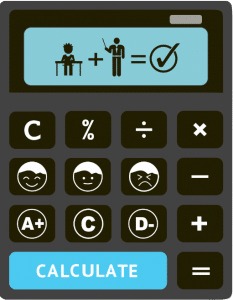Overview
You must have encountered colourful and attractive banners that read “20% off! Hurry!!”. Do you know what exactly that means, and why should you hurry? In this article on year 5 maths, we explore the concept of percentages.
Learning Outcomes
After you have read this article, you will:
- Understand what percentages mean and how to use the % symbol
- Be able to identify percentages in real-life situations
- Learn how to convert fractions and decimals to percentages
What is a Percent?
A percent is a way of expressing a part of a whole in terms of a fraction of 100. The word “percent” means “per hundred” or “for every one hundred”. It is denoted by the symbol %, which is placed after the number.
For example, if 40% of the students in a school are girls, it means that 40 out of every 100 students in the school are girls. Note that it does not mean that there are 100 students in the school and exactly 40 are girls. The school can have 200 students (out of which 80 are girls), 500 students (out of which 200 are girls), or any number. The statement just means that every 100 students, on average, has 40 girls.
Percentages in Real Life
Percentages are used in many real-life situations. For instance, when you look at the battery icon on your electronic device, it shows the percentage of battery left. If the icon is halfway full, it means the battery is at 50%.
Another example is when a retail store offers a discount on its products. For instance, if a toy is priced at $20 and the store is offering a 20% discount, you will only have to pay $16. How come? It’s because the store offers a discount of $20 on a purchase of $100. If the purchase amount is only $20 ($100/5), the discount is only $4 ($20/5). Makes sense?
What Percent Is Demonstrated?
Can you predict what percentage is shown in the figure below?
As 76 out of 100 small squares are coloured, we say that 76% (read as “76 percent”) of the box is coloured.
Converting Fractions to Percentages
Sometimes, we need to convert fractions to percentages. To do this, we can use equivalent fractions. An equivalent fraction is a fraction that has the same value as another fraction but with different numbers.
Consider this question:
1/4 of the books in a library are science fiction. What percent of the books are science fiction?
We know that 1 out of every 4 books is science fiction, but we need to know the number out of every hundred. We can use equivalent fractions to turn 1/4 to 25/100, so this is 25%. Therefore, 25% of the books in the library are science fiction.
Here’s another example:
1/10 of the apples in a basket are rotten. What percent of the apples are rotten?
1 out of every 10 apples is rotten, which is equivalent to 10/100 or 10%. So, 10% of the apples in the basket are rotten!
Converting Decimals to Percentages
Decimal numbers can also be converted to percentages. Remember that the place value of a decimal number after the decimal point tells us the fraction of a whole.
For example, if the decimal number is 0.35, it means 35 hundredths, or 35/100, which is 35%. Similarly, if the decimal number is 0.7, it means 7 tenths, or 7/10 = 70/100, which is 70%.
Wrap Up
Percentage is a very important topic, especially when you are in middle school. It also finds a lot of use in our daily lives. If you want to understand this topic in more depth, feel free to contact us today.







